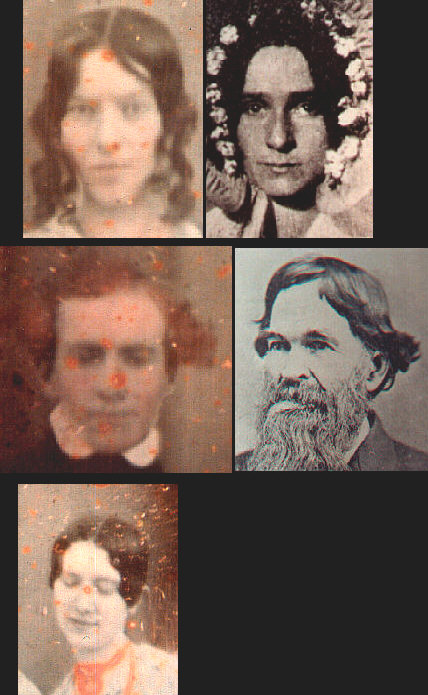
On left are three
detailed closeups of the quarter-plate daguerreotype Plate "M" (reversal of the original
daguerreotype is corrected), (Writer's collection.). On right at top is a detail of the
Dorothy Catherine Draper daguerreotype in an 1893 artotype copy (Kansas State Historical
Society). On right at bottom is a detail of William Henry Goode (G. Brown Goode
Virginia Cousins, Richmond, Virginia, J. W. Randolph & English,
1887.)
|
There is only one known photograph (ca.1880s) of
William Henry Goode.[135] No part of Goode's bearded face in the
1880s portrait appears to rule out the
possibility that it could be the same face as the young man in the early quarter-plate daguerreotype.
The
strange puff of hair in the daguerreotype matches the way Goode's hair juts out in the 1880s
photograph.
Speculatively, the other young woman in the quarter-plate could be Elizabeth Johnson
Draper. No positively identified photograph of her has yet been located by the writer. This young
woman could also be someone else entirely.
|